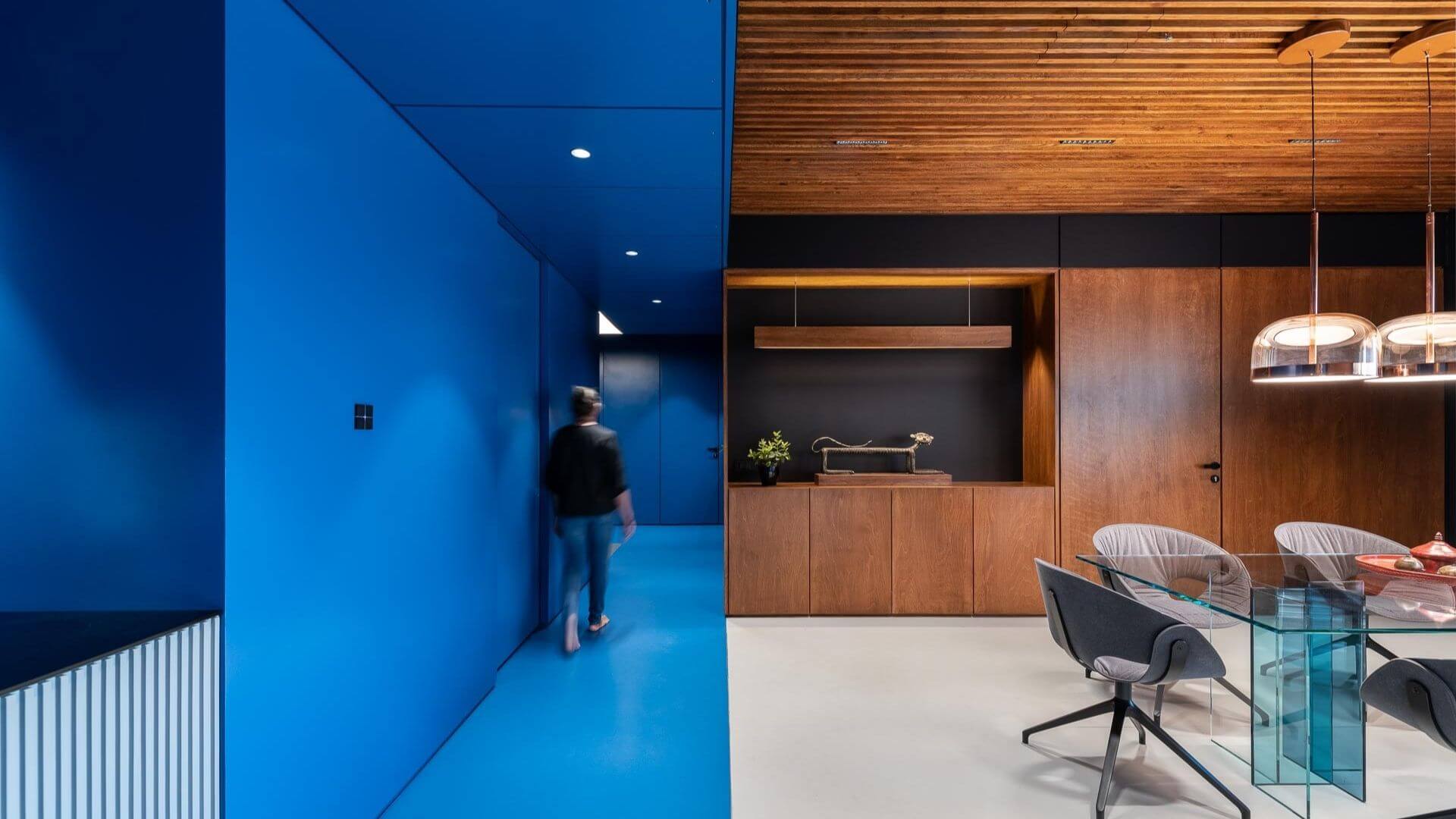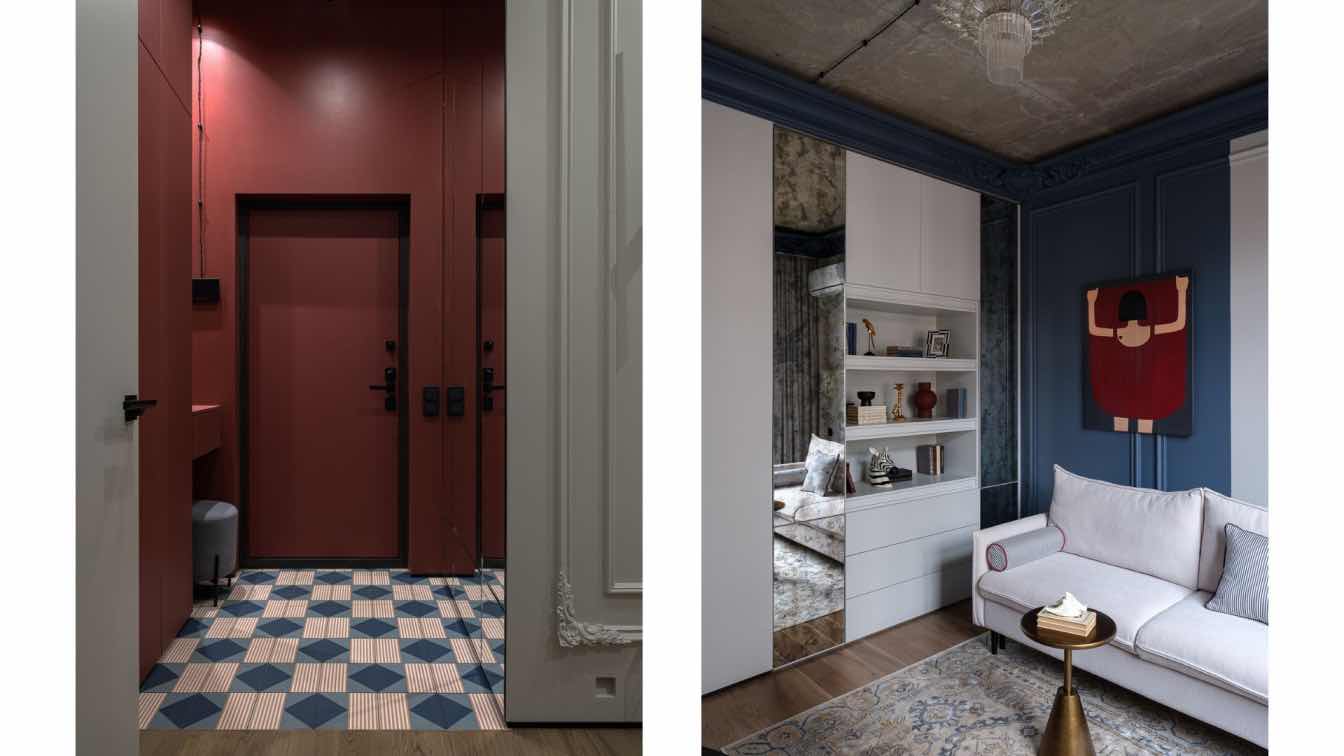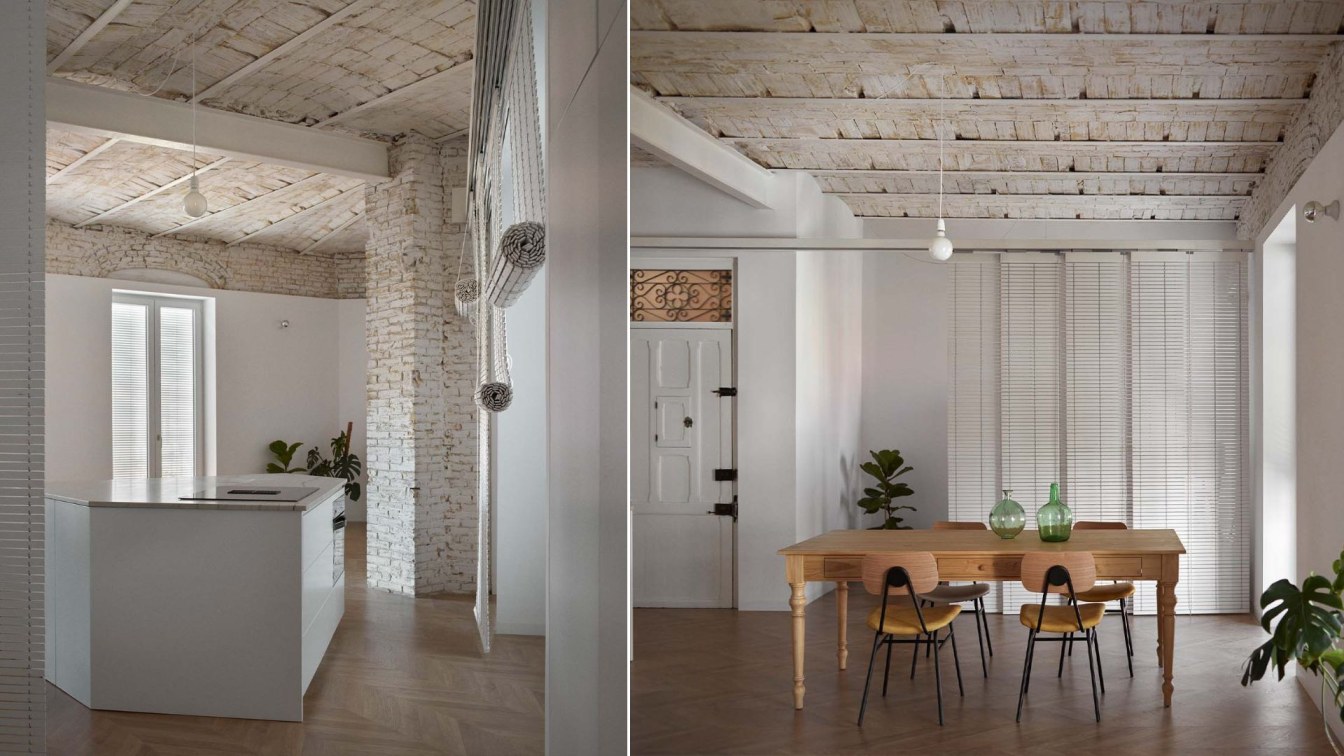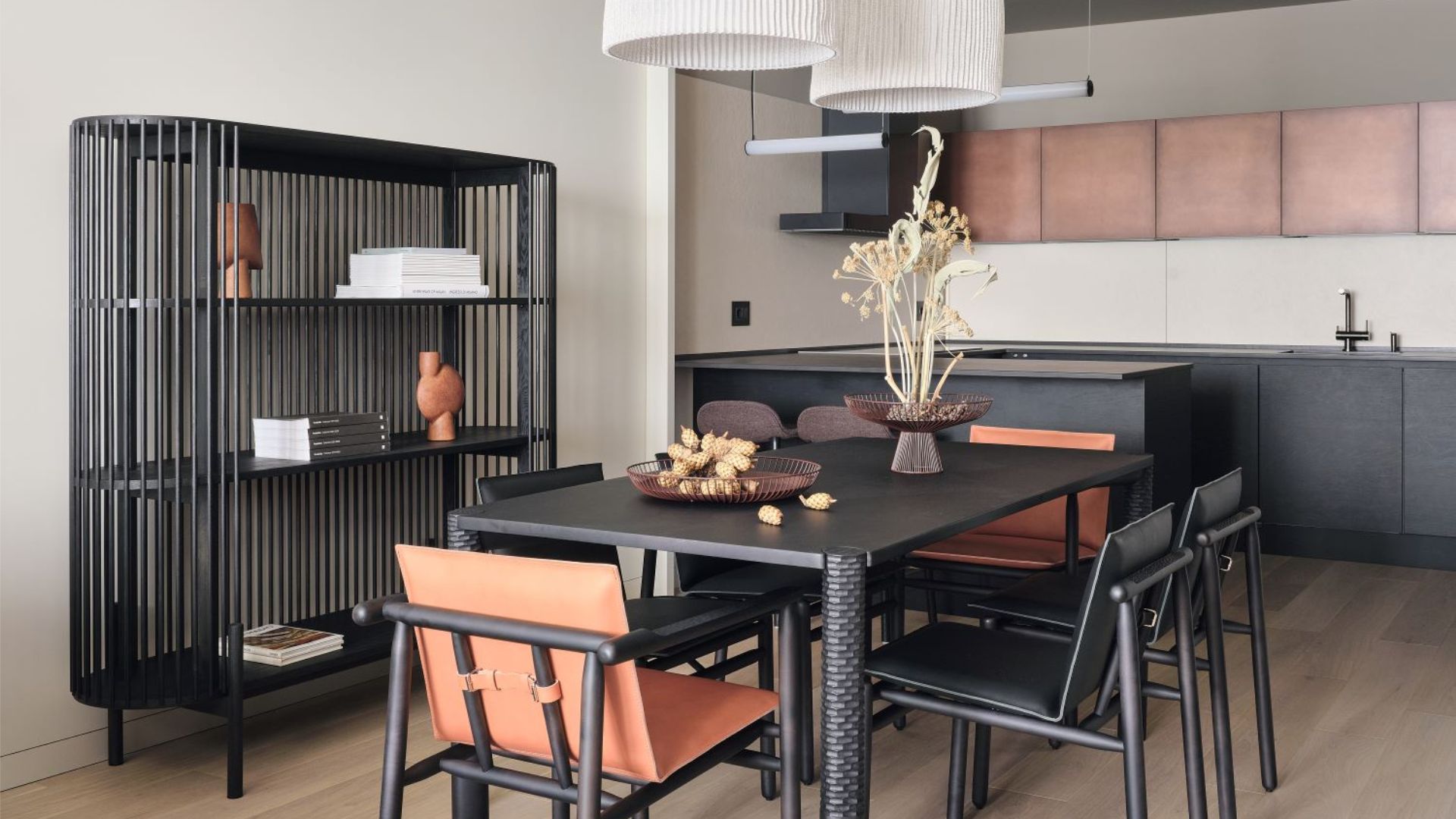DIG Architects: Who are the clients and what was their brief?
Client’s pervious abode was a fairly lavish bungalow on the periphery of city limits. They decided to move into the city to cut their daily commute to their workplace by moving closer to it. Therefore the transition from a much larger space to a comparatively small space needed to be smooth.
Client brief was to create a comfortable, striking living space with a modern take on Indian cultural narrative through intelligent use of local and global material palate. Unlike the larger percentage of people they weren’t averse to use of dark themed colours/materials if the space demanded it. The client came from a very strong contemporary background. Due to which they were very keen on use of clean lines and linear spaces.
What is notable about this project?
The intent of this design was to work within the context of the Indian cultural narrative with a new language of interpretation that allows for a dynamic, varied and yet enduring experience for the end user.
The spine of the design is the exuberant use of colors, which is a key element of the Indian culture. The subtle yet definitive use of colors to connect with the space without being overwhelming and out of sync presented a new challenge. The mainstay of the theory is the large volume that starts right from the entrance spanning till the lobby for individual rooms. This volume has been termed ‘The Blue Scoop’. The design intent for it was achieved by having all the surfaces connected to this volume in a single tone of color (Blue). This move creates an illusion of a chunk of mass being subtracted (scooped) and separated from the overall volume. Keeping the spaces muted around this scoop further ensures that there is emphasis on this space being the mainstay of design.
Another example of an inspired use of color is how the color black is used in this space. Black, which is typically considered taboo, if used wisely can offer a new interpretation of other colours and elements around it. In this project, the colour black provides a contrast and context to the other colours.

We have attempted to continue the Indian cultural narrative by using local raw materials. The textures of these individual raw elements, such as brick and stone were highlighted using available natural light. The material palate consists of Godhra brick tiles, concrete floor and stained Birch plywood in its raw form. At the same time there are elements like colored PU, back painted glass and matte black paint that balance out the rusticity.
The correlation between the living space and the lounge area is conceptualized to achieve much needed modularity. One can create different scenarios by opening and shutting door panels. Careful consideration has been given to where the doors are parked during these scenarios.
While weaving an Indian cultural narrative through these different elements, we tried to create a new ‘language interpretation’ that doesn’t rigidly adhere to dichotomies like Indian v/s western, modern v/s traditional.
Such narratives can be found via artwork of old vintage cars and global 3D artwork coexisting with Bastar’s tribal art in the same space.
The intent has been to provide an ‘experience’ to the end user that is unpredictable and dynamic. Creating such an experience surely involves risk-taking for the designers, but the reward is an unprecedented yet an enduring experience for the clients.
Are there any elements of sustainability or passive design principles?
Emphasis was given on using locally available/sourced building materials like stone, timber, bricks etc to make the building exercise more sustainable























